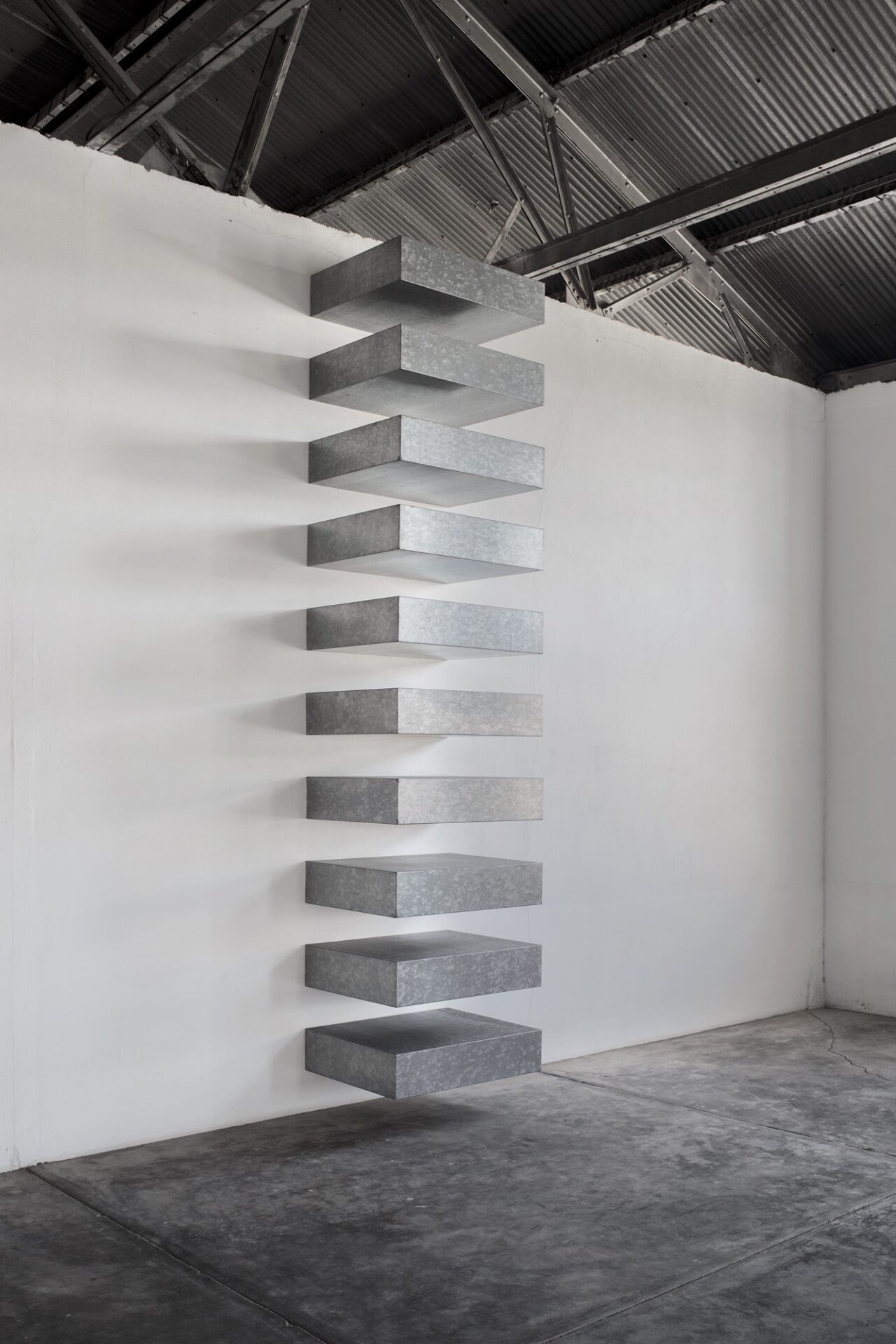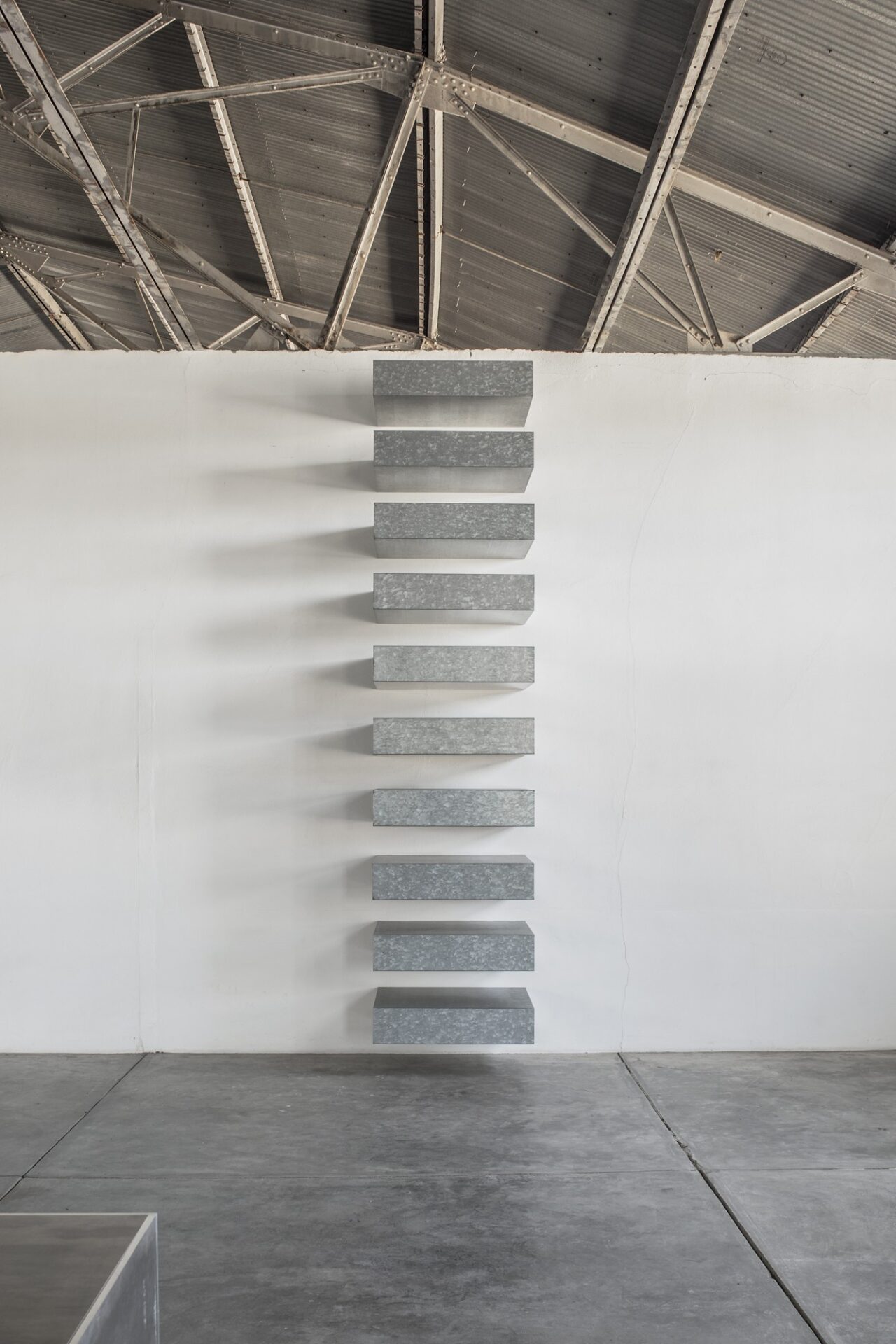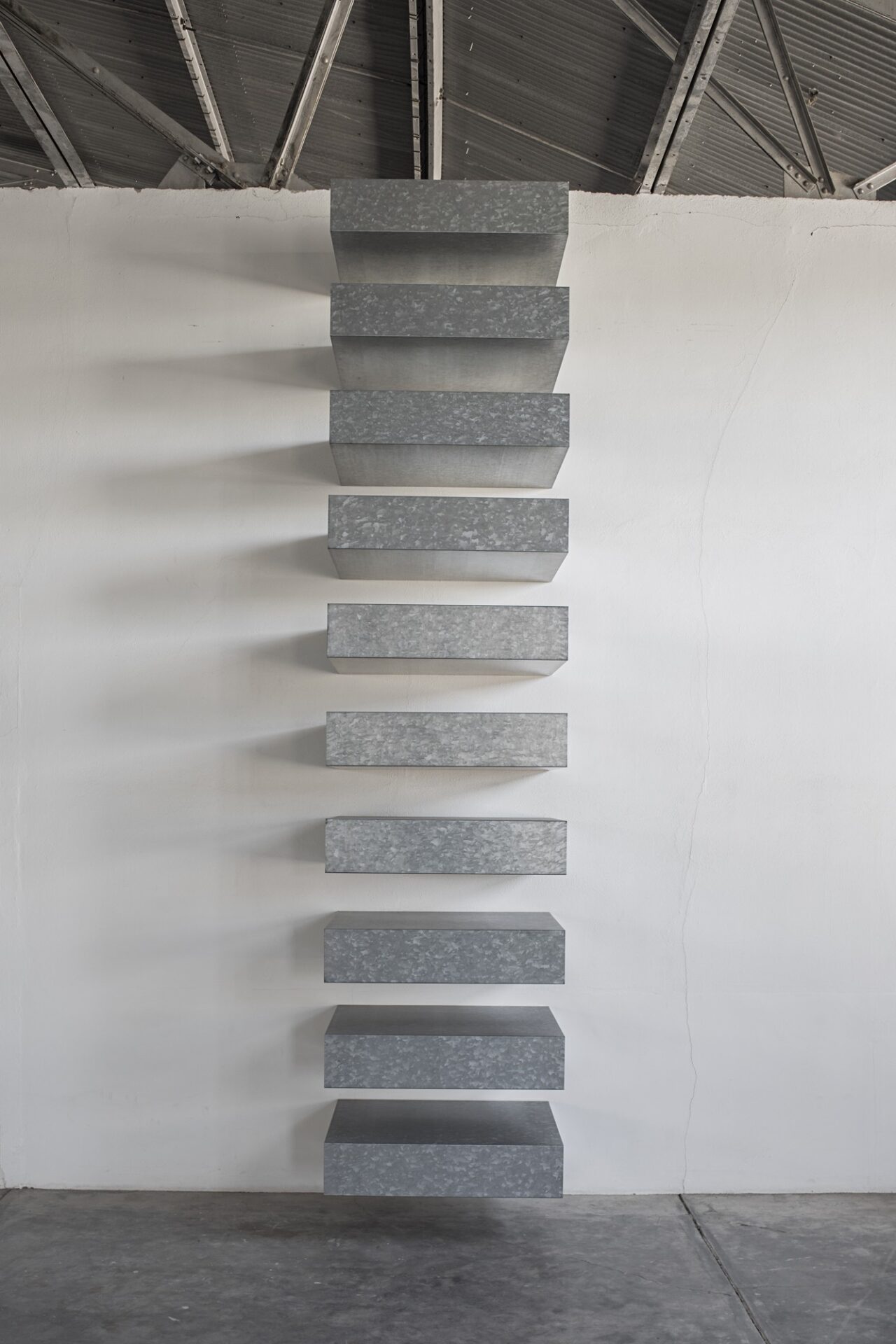With few exceptions, works of this kind, referred to by Donald Judd’s studio as “stacks,” were made in ten units. These works are installed so that the volume of each unit and that of each interval between them are equal, ideally spanning the full height of the wall.
Judd installed three stacks in the north room in the east building at the Block. The stack format allowed for a number of combinations, including a single metal on all sides, referred to as “solid”; those with acrylic sheets on the top and bottom; and those with metal on the top and bottom and panels of acrylic on the three facing sides, referred to as “wraparound.” All units in a stack are uniform in their appearance. The dimensions of all three stacks at the Block make them “large” stacks, while the units in a “small” stack measure six by twenty-seven by twenty-four inches and can be installed on shorter walls.
When asked in a 1971 interview whether the way the stacks “visually bite into the wall surface” was important, Judd responded, “No, the wall goes through the piece and that’s all.”1
Judd’s first stack, made in 1965, was constructed out of galvanized iron. It has slightly different dimensions and only seven units.


